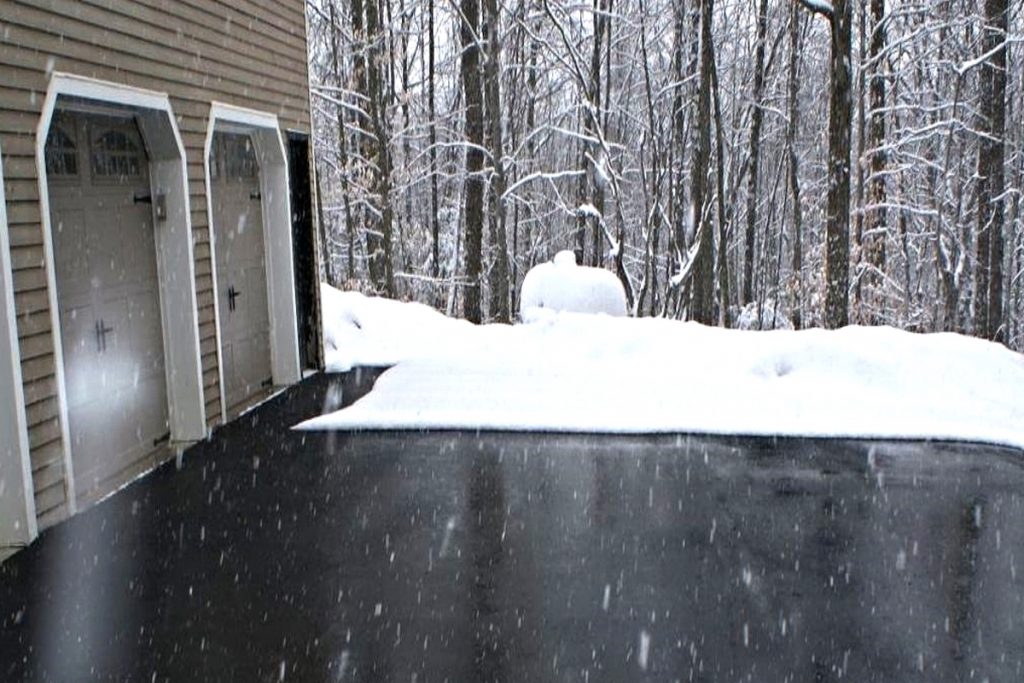The traditional way to fix basement leaks involved digging; consequently, it was necessary to ensure that basement waterproofing activities were done when the weather was good – usually when weather is warm and dry. Today, fortunately, homeowners can waterproof their basements year round regardless of weather conditions.
Challenges of excavating and waterproofing a basement during the winter
Trying to excavate and waterproof around a foundation during the winter can be problematic for several reasons:
- Frozen soil can be very hard to penetrate and backfilling the excavated area with frozen chunks of clay can be a problem to compact;
- Foundation coatings must necessarily be solvent based, which means that the time to properly cure is usually a couple of days and the interior of the home will smell of solvent for a couple of weeks;
- Exposure of the foundation footing to freezing temperatures can result in frost heaving of the foundation which can cause significant structural cracking;
- It’s impossible to clean-up properly when the snow and soil are mixed together; and
- Understanding human nature, workers tend to try to limit their exposure to cold temperatures – so shortcuts in performing the work are to be expected.
Given the challenges of winter time excavation and its associated high cost, it makes sense during winter months to consider interior options for basement leak repair. Fortunately there are excellent interior waterproofing methods available, regardless of the type of foundation you have, and they typically cost much less than leak repairs involving excavation.
You may want to check out this article: Is it better to fix a basement leak from the inside or the outside?
The interior basement leak repair options
It might seem counterintuitive that water leaking into a basement from the exterior can be stopped or repaired from the interior; but the logic of this is found in the details of how basement leak repairs are done.
The simple truth is that, for a foundation to leak, there has to be a way for water to penetrate the foundation wall. In most cases water enters through the foundation through foundation cracks (although this is not the only path of entry of groundwater). The available repair method(s) from inside your basement will vary depending on the type of foundation that you have – either poured concrete (1980 – present) or concrete / cinder block (pre 1980).
What is imperative for any interior basement crack repair is that you prevent the concrete from remaining saturated; this matters because water saturated concrete deteriorates over time – deterioration which is irreversible.
Poured concrete foundation crack repair
Fixing leaking cracks in poured concrete foundations is easily and inexpensively repaired using a technique referred to as “crack injection”. The crack injection process involves the pressurized injection of resin into a foundation crack in order to fill it. Once the crack has been filled the crack no longer exists, so water can no longer penetrate the foundation. This process is used extensively in applications where excavation is not an option – for example underground mines and parking garages.
Concrete / Cinder block foundation leak repair
While concrete block (or cinderblock) foundation leaks are caused by cracking it is important to note that, in general, the cracking causing the leaks is found in the mortar joints binding the blocks together. Fortunately this cracking is typically minor, and this type of cracking is pretty much a given for this foundation type.
If cracking of the mortar joints is unavoidable then it is necessary to ensure that the largely hollow block walls do not fill up with water and cause the blocks to be saturated over long periods of time. Preventing this buildup of water within the blocks is accomplished from inside your basement by providing a means for the water trapped in the foundation walls to drain out. Such a system is typically referred to as a perimeter drainage system.
